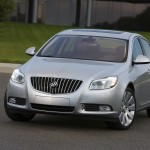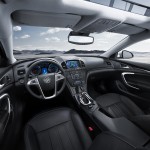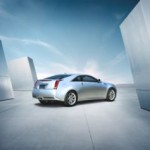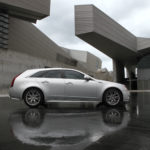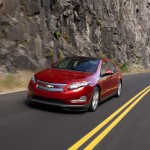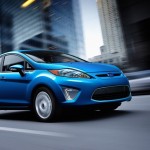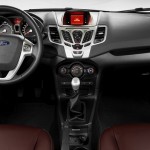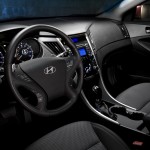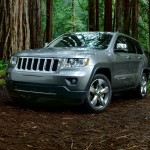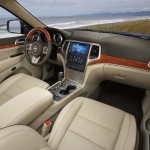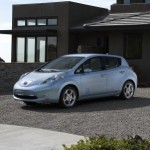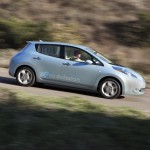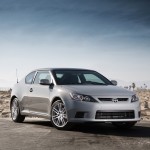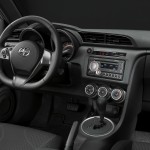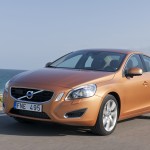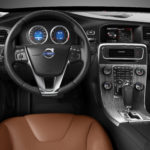 There are lots of new and redesigned vehicles being built for the 2011 model year, and to help you sift through them, I’ve put together my Top 10 list of them. They range from the mainstream to luxury, but they’re all significant for the industry, manufacturer, or both. Click past the jump to see what made my list and why.
There are lots of new and redesigned vehicles being built for the 2011 model year, and to help you sift through them, I’ve put together my Top 10 list of them. They range from the mainstream to luxury, but they’re all significant for the industry, manufacturer, or both. Click past the jump to see what made my list and why.
I’ve listed the following ten vehicles in alphabetical order by manufacturer. Let me know what you think in the Forums! (INSERT LINK TO FORUM TOPIC HERE)
Buick Regal
The Buick Regal brings back a tarnished nameplate for the semi-luxury GM brand, using the German engineering of GM’s Opel subsidiary. By designing the Opel to be more modular, including swapping headlights, taillights and badges, the Regal is a good example of badge engineering, a strategy that hasn’t worked out well for it, Chrysler or Ford. That’s not to say it’s a bad move for General Motors, since it injects some distinctly European flair into the traditionally stodgy domestic brand. With rave reviews, the new Regal is off to a good sales start, and works well as Buick’s entry-level car. For the 2011 model year, Buick will only be offering the CXL trim, with base and Turbo models, starting at $26,995 and $29,495, respectively. For 2012, the lineup will grow to three trim levels, and production will move from Europe to Canada. It’s a game-changer for Buick, which needs to bring its average buyer age down a good ways to stay in business.
Cadillac CTS Coupe / Wagon (plus V variants)
For Cadillac to really be the “New Standard of the World,” as their advertising would suggest, they need to compete head-to-head with the likes of BMW and Mercedes. Taking the CTS sedan’s solid structure and sales and adding coupe and wagon variants goes a long way towards accomplishing this goal. Expanding the CTS lineup is Cadillac’s first shot across BMW’s bow, and with all three body types containing the amenities and style BMW buyers are looking for, it should hit its mark. By offering performance-oriented V models, Cadillac is banking on the success of its CTS-V sedan to steal buyers of BMW’s M3 and Mercedes’ C63 AMG.
Chevrolet Volt (also notable: Chevrolet Cruze)
Finally, a mass-market electric car is coming to market. While it may not be electric-only, the range-extending gas engine should dispel range anxiety – the fear of running out of juice before returning to a charging station. With government subsidies, the Volt will be starting at around $33,000, but plan on spending another $2,000 or so to charge your Volt in less than 10 hours. The Volt is competing directly with the Nissan Leaf in the media, even though the Leaf is electric-only. By sharing its underpinnings with Chevrolet’s upcoming Cruze, GM could design the powertrain and other components separately, which saves the beleaguered automaker untold millions in development money. It also allowed the General to up its game in the small car segment, where the existing Cobalt has been a non-starter.
Ford Fiesta (also notable: Mazda Mazda2)
With the success of BMW’s Mini and the price of gas, some Americans have started to embrace the truly small car. The only hurdle left is convincing buyers who have a hard time putting $20,000 into a small car when for a few thousand dollars more, you can get a much larger one. The trick Ford is using is its SYNC infotainment system and high quality materials, fit and finish, as well as other amenities normally found in larger cars, such as heated leather seats. The Fiesta also re-starts Ford’s global car initiative, which stalled when redesigns of its Focus weren’t brought to the US from Europe, where the Focus is a much more popular car. Furthermore, even though Ford sold its controlling interest in Mazda, the two companies are still working together, including the platform that both the Fiesta and Mazda’s Mazda2 ride on. The Mazda2 promises to be a more fun to drive car, even while the Mazda is cheaper and has less options available.
Hyundai Sonata
After the initial success of the Genesis sedan and coupe, Hyundai is continuing its roll by revamping the Sonata mid-sized sedan. Already on sale, the Korean automaker has already moved a significant amount of metal, and for good reasons. Better-equipped, better materials, and three models to suit a bevy of tastes means the Sonata is really earning its place as Hyundai’s bread and butter car. Initially, only one model is available, in several trim levels, staring at around $20,000, but soon we’ll see the Hybrid and Turbo models debuting. Offering class-leading fuel economy, the Sonata is Hyundai’s first attack at upcoming CAFE (Corporate Average Fuel Economy) requirements.
Jaguar XJ
Jaguar’s styling seemingly hasn’t changed in decades, but the XF sedan which debuted in 2008 started a design revolution for the English brand. The XJ continues that, and brings Jaguar into the 21st century style-wise. The new XJ also brings Jaguar’s electronics up to speed, to compete with Audi, BMW and Mercedes. As long as the trick electronics hold up, Jaguar could have a hit on its hands, bringing the automaker back into the limelight of luxury cars.
Jeep Grand Cherokee
As I’ve written before, Jeep is rebuilding a legend with the 2011 Grand Cherokee SUV. With a less truck-like look, ride and feel, but with all the gadgets buyers expect, the Grand Cherokee looks like a winner. Jeep may lose some of its more rugged buyers, but it still offers the Wrangler to those buyers. The new Grand Cherokee rides on the last-gen Mercedes ML chassis, which is why it rides better, but its new platform also brings with it a much-improved off-road setup, so it’s a win-win for Jeep. Chrysler also gets to use this opportunity to refresh its Durango, a less-expensive and more sport-oriented alternative to the Grand Cherokee.
Nissan Leaf
For years, Nissan has been more a niche player than a mass-market manufacturer. With sales that lag behind that of Honda and Toyota, it has best competed with Mazda. Both automakers offer fun-to-drive vehicles that sell in smaller numbers, save the Mazda3. Nissan’s hybrid offerings have also fell behind that of Ford, Honda and Toyota, so it needed something unique to offer in the fuel economy wars. Enter the Leaf, a small plug-in electric car. With a range of 100 miles, the Leaf will work for a lot of commuters whose drives don’t include a lot of highway miles. The downside? Range anxiety. As the distance-to-empty meter gets closer to zero, drivers will be looking long and hard for a charging station. Major markets like LA, D.C. and New York will be building the charging stations, but most owners will be using in-home chargers, which will cost around $2,000. Reportedly, Nissan will be building the cost of the charger into the cost of purchase or lease, which is a smart move, and the rumor mill also says week-long loaner cars, with regular gasoline engines, will be available. It’s tough to say how well the Leaf will do, but I expect it to sell decently in the 150 or so markets it will be available, as long as the advertised range stays true when in the hands of consumers.
Scion tC
Toyota’s youth-oriented brand was originally designed to have single-generation vehicles replaced in 4-5 year increments. With steady sales of its tC model, Toyota executives commissioned a second generation, which ups the tC’s game with fresh design inside and out, as well as the speaker system from the Lexus LX470, a seriously bold move, and one which is bound to sway a fair number of younger buyers who are also audiophiles.
Volvo S60
Long believed to be more into safety than driving dynamics, Volvo needs less boring vehicles. Enter the 2011 S60 mid-sized sedan, which Volvo has been advertising as being “naughty.” Completely redesigned, the Volvo offers buyers the safety they’ve come to like, with proper handling and ride to go with it.
by John Suit
Information / Image Sources: Chrysler, Ford, GM, Hyundai, Jaguar, Mazda, Nissan, Volvo

